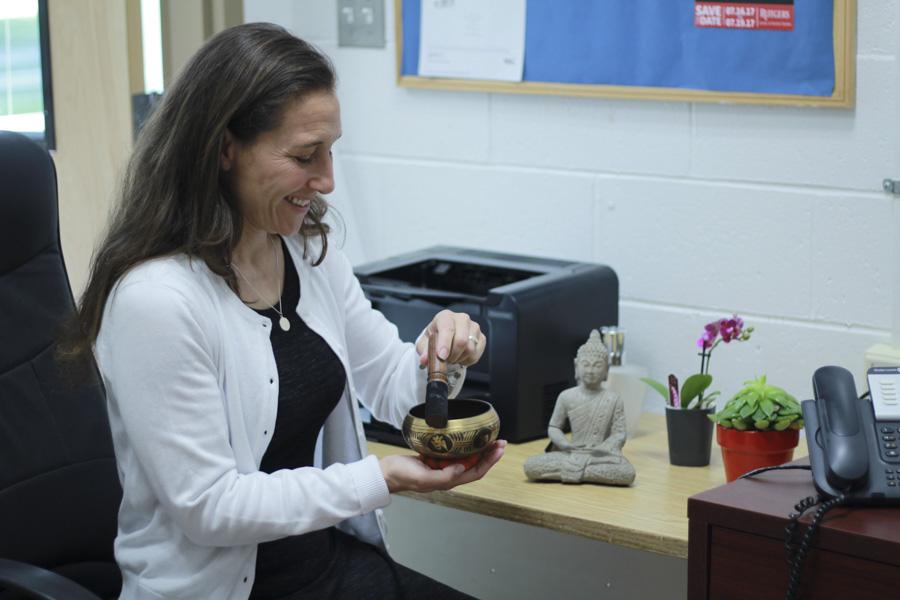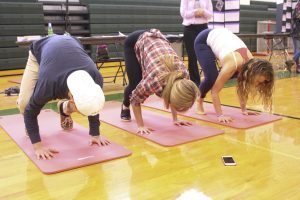Students practice mindfulness to reduce stress and increase attention
Student Assistant Counselor Mrs. Christie Rossig uses the Tibetan Singing Bowl in her office. She has been teaching the practice of mindfulness to PV students and uses gadgets such as the singing bowl in her lessons.
Ding!
The high-pitched whine of the chime echoes throughout the silent classroom. Students sit, eyes closed, minds emptying.
Once the room is quiet again, the Tibetan Singing Bowl hums across the still air.
PV Student Assistance Coordinator Mrs. Christie Rossig promotes mindfulness meditation and believes it is immensely important and beneficial to students.
“Simply stated, [mindfulness] is training your brain to be aware of the present moment and what is going on around you in the here and the now,” Rossig said.
Since January, Rossig has been reaching out to all PV students in their Physical Education, Health, and Driver’s Education classes in order to teach mindfulness and the benefits of practicing its techniques in daily life.
According to Mindfulschools.org, mindfulness helps students live in the moment, focus for longer periods of time, and make better decisions. It can improve a student’s ability to deal with psychological challenges that stem from stress, such as being overwhelmed and staying constantly busy to avoid facing emotions.
Rossig believes that stress reduction can help the PV community and that mindfulness is the most effective way for students to manage their stress. There is a clear divide between healthy stress and toxic stress. Healthy stress provides motivation, while toxic stress can make it more difficult to concentrate in class and regulate emotions.
At the beginning of each mindfulness lesson, Rossig asked each student to rate their everyday stress on a scale of 1 to 5, with 1 being the lowest and 5 being the highest amount of stress. She then explained the concept of mindfulness and detailed the various ways students can use it on a daily basis.
Throughout each lesson, students also participated in mindfulness techniques— some as simple as deep breathing or listening to the sound of a bell.
“What we did in class—breathing for ten breaths, listening—these things can be done in such short amounts of time and they really do, over time, have a cumulative effect,” Rossig said.
According to Rossig, students can start practicing mindfulness in their daily lives by using these exercises to train themselves to pay attention for short periods of time. She believes these techniques can increase a student’s ability to concentrate on the present.
“There’s one [exercise] where you scan through your body and release all the tension,” said PV junior Holly Aloi, who frequently practices mindfulness in the Wellness Center. “I do that all the time now, and that’s an everyday thing that’s now integrated into how I think.”
Rossig hopes that more teachers will become interested in using mindfulness in the classroom to help students pay attention before lessons and assessments. Outside of the classroom, students can use various mobile applications, such as Aura and Headspace, among others, to practice mindfulness conveniently.
“If [students] could take three to five minutes right before they started their homework to kind of get in the zone,” Rossig said, “I think that would really help them to be less stressed, to be more organized, and to focus on doing one thing at a time.”












